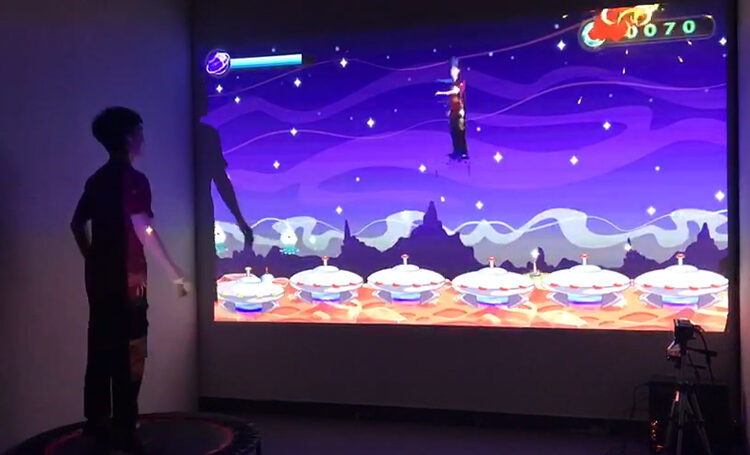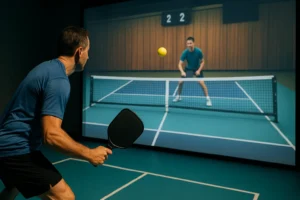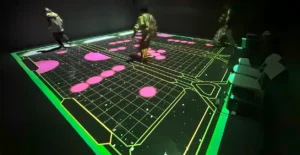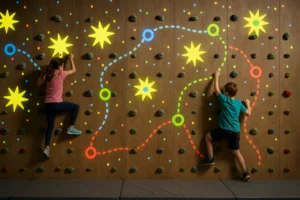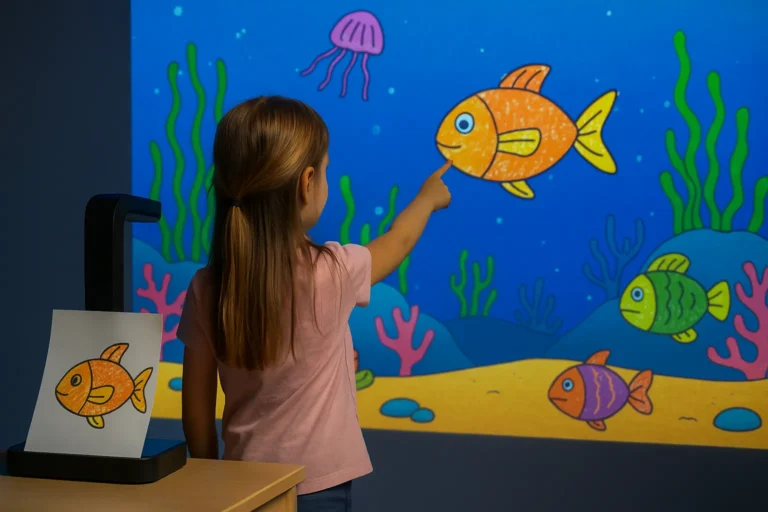The Rise of Interactive Trampolining: Bouncing into a Virtual World
Interactive trampoline equipment with AR games combines the thrill of traditional trampolining with the immersive world of virtual reality. Participants wear AR headsets that project a virtual environment onto their field of view. Their jumps and movements within the physical trampoline space are tracked by sensors, allowing them to interact with the virtual world.
This technology unlocks a whole new level of engagement, transforming trampolining from a physical activity into a fully immersive experience. Imagine dodging fire-breathing dragons, scaling virtual mountains, or competing in futuristic obstacle courses – all while bouncing on a trampoline!
Components of an Interactive Trampoline AR System
Here’s a breakdown of the key components that make AR trampolining possible:
- AR Headsets: These high-tech headsets are the gateway to the virtual world. Popular options include Oculus Quest, HTC Vive, and PlayStation AR. The choice depends on factors like budget, desired resolution, and compatibility with specific AR trampoline software.
- Motion Tracking System: This system plays a crucial role in translating real-world movements into the virtual environment. Sensors are typically embedded in the trampoline bed or worn by participants to track jumps, flips, and other movements.
- AR Trampoline Software: The software is the heart of the experience, creating the virtual environment and ensuring seamless interaction with the motion tracking system. VR trampoline software comes in various themes and game types, catering to different age groups and interests.
- Trampoline Equipment: While the basic trampoline structure remains the same, some VR trampoline systems utilize specialized trampolines with enhanced padding or integrated sensors for optimal performance.

Beyond the Fun Factor: Benefits of AR Trampoline Equipment
The integration of AR technology offers numerous benefits for both trampoline park owners and their customers:
- Enhanced Customer Experience: AR trampolining provides a unique and exciting experience that sets your park apart from the competition. It attracts new customers and keeps existing ones coming back for more.
- Increased Revenue Potential: AR attractions can be offered as an add-on service, generating additional revenue streams. You can also host VR-themed parties or events to attract a wider audience.
- Improved Safety and Control: AR games can be designed to encourage specific movements within designated areas of the trampoline, potentially reducing the risk of collisions and injuries.
- Data Collection and Insights: Some AR trampoline systems offer data collection capabilities. This data can be used to understand customer preferences and tailor AR experiences accordingly.
Finding the Right AR Trampoline System Supplier
The success of your AR trampoline experience hinges on choosing the right supplier. Consider the following factors during your search:
- Experience and Expertise: Look for suppliers with a proven track record in developing and installing AR trampoline systems.
- Software Options: Evaluate the variety and quality of AR trampoline software offered by the supplier. Does it cater to your target audience and align with your vision?
- Hardware Compatibility: Ensure the AR headsets, motion tracking systems, and software offered by the supplier are compatible with your existing equipment or planned setup.
- Safety Features: Safety is paramount. Choose a supplier that prioritizes safety measures in the design and implementation of their AR trampoline systems.
- Support and Maintenance: Reliable ongoing support and maintenance services from the supplier are crucial for the smooth operation of your AR trampoline attraction.

Considering the Cost of AR Trampoline Equipment
The cost of AR trampoline equipment can vary depending on several factors, including the number of stations you want to set up, chosen hardware and software, and any necessary upgrades to your existing trampoline setup.
A basic AR trampoline system for a single user might start around $5,000, while a multi-user setup with high-end components and custom software could reach $50,000+. Carefully assess your budget and long-term goals when making your investment decision.
Costs vary widely depending on the chosen technology, complexity of games, and number of stations. Expect a starting price point in the tens of thousands of dollars.
While some online stores offer basic interactive systems, custom AR experiences typically require collaboration with a specialized supplier who can design and install the equipment based on your specific needs.

